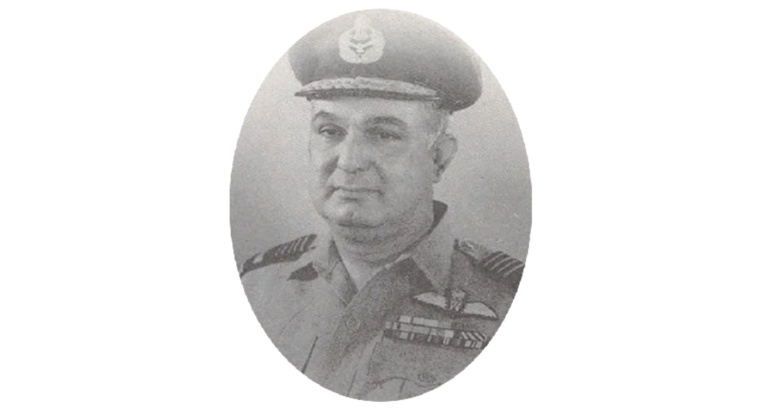A much decorated war veteran
Air Marshal Minoo Merwan Engineer, PVSM, MVC, DFC was a former pilot in the Indian Air Force (IAF). He is among the most decorated officers in the Indian Air Force, with the second-highest civil decoration – the Padma Bhushan, two gallantry awards – the Maha Vir Chakra (MVC) and the Distinguished Flying Cross (DFC), and the highest peace-time distinguished service award – the Param Vishisht Seva Medal (PVSM).
Engineer was born Aspy Merwan Irani on 1 December 1921 in Lahore, Punjab Province, British India to Meherwan Irani and Maneckbai. He was the sixth amongst eight siblings – two girls and six boys. His brothers, Aspy, Jungoo and Ronnie, also joined the Indian Air Force, while another brother, Homi, joined the Indian Army. Aspy, Minoo and Ronnie were recipients of the DFC, a unique feat where three brothers were decorated with gallantry awards. Minoo’s interest in mechanics led his friends to rename him Engineer.
Engineer studied in Elphinstone College, Mumbai. He joined the Royal Indian Air Force (RIAF) in 1940, being commissioned on 1 August. During World War II, he served in Myanmar as a part of No. 3 Squadron, RIAF. “As Flight Commander, he led many successful attacks in support of the Army, most of the time bombing and strafing in difficult country within a few hundred yards of our own troops. At all times, he showed outstanding ability and skills in leading his flight”. For this he was awarded the DFC for the Arakan, Myanmar operation.
On 30 November 1945, Engineer was promoted as Squadron Leader and appointed commanding officer of No. 8 Squadron RIAF. After the war, on 1 November 1946, he was appointed commanding officer of No. 4 Squadron RIAF. The squadron relocated to Miko, Japan as part of the occupation forces. Engineer led the squadron in the relocation and operations in Japan.
During Jammu and Kashmir (J&K) Operations 1947- 48, as Wing Commander, he was drafted for Kashmir Operations for almost a year. Under Engineer’s guidance, the enemy was hit hard on a number of occasions at Kishanganga Bridge, Skardu and Gilgit. During the capture of Gurais, the Air Force extended very effective support to the land forces. For this operation, he was awarded the MVC, the second-highest war-time gallantry award.
After the war, in 1949, he was selected to attend the Royal Air Force (RAF) Staff College, Andover, UK. After completing the staff course, he returned to India and was appointed Senior Air Staff Officer (SASO) of the Training Command in Bangalore.
During the Indo-China War of 1962, he was specially selected and appointed Air Officer Commanding (AOC) of the No. 1 Operational Command based at Tezpur, Assam, where the Chinese threat was growing. Coping remarkably with all the air support requirements projected by the Army within the meager resources of men and material then available, he was awarded the Param Vishisht Seva Medal.
From 1964-69, Minoo was the Deputy Chief (equivalent to Vice Chief today). He oversaw the 1965 war, revamped the Deputy Chief of the Air Staff (DCAS) office introducing concepts of offensive and air defense arms. He was promoted to Air Marshal.
At the time of Indo-Pakistani War of 1971, he was Air Officer Commanding-in-Chief of Western Air Command. His retaliatory air strikes on 3rd and 4th December 1971 took the air war deep into enemy territory and his leadership contributed greatly to Indian victory. For this, Engineer was awarded the Padma Bhushan.
Just a month short of retirement, he flew in the Republic Day fly-past in a MiG-21U. He retired in 1973. Below his jovial, exterior lurked a steely resolve.
In 1990, Maharashtra government honoured him with ‘Gaurav Puraskar.’ On retirement, he plunged into different challenges such as CEO of an advertising agency which he ran in failing health till his death in 1997.

